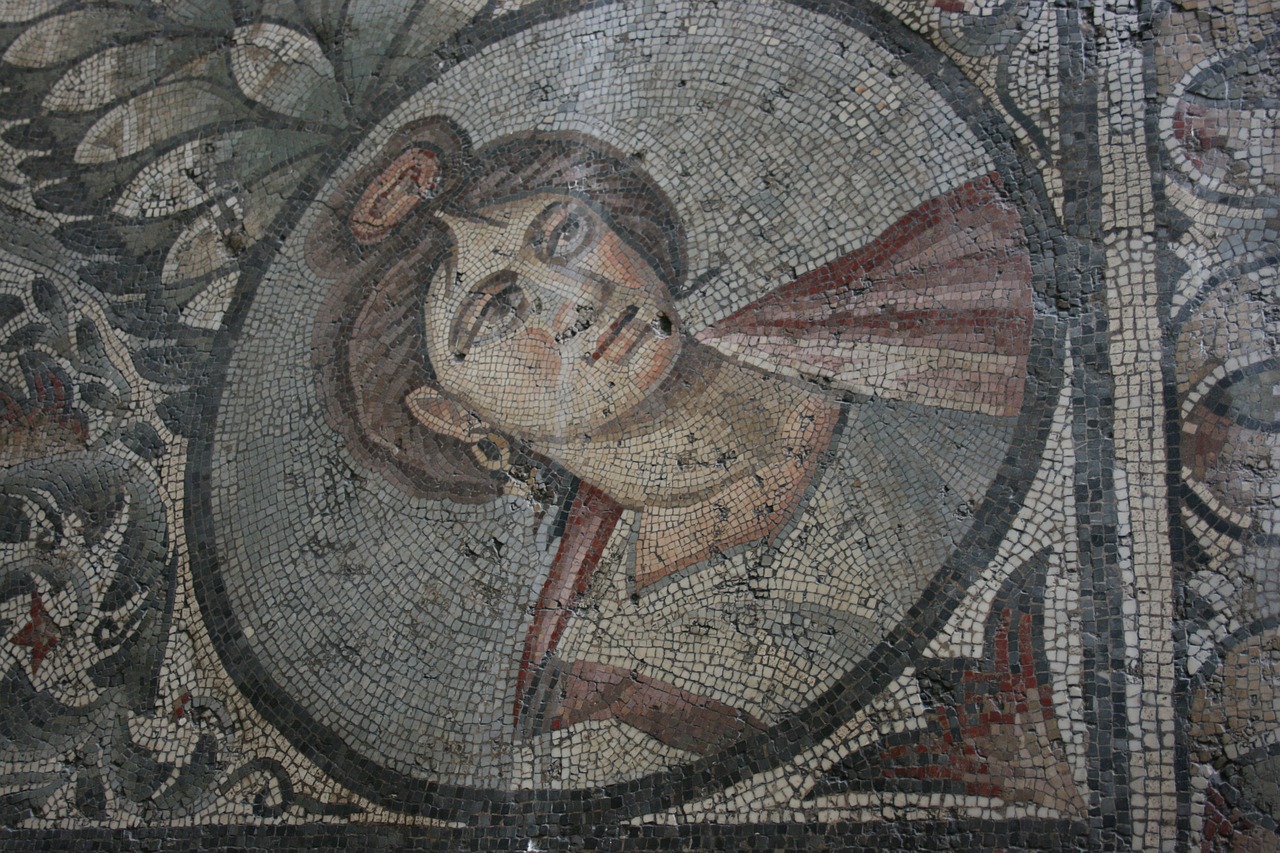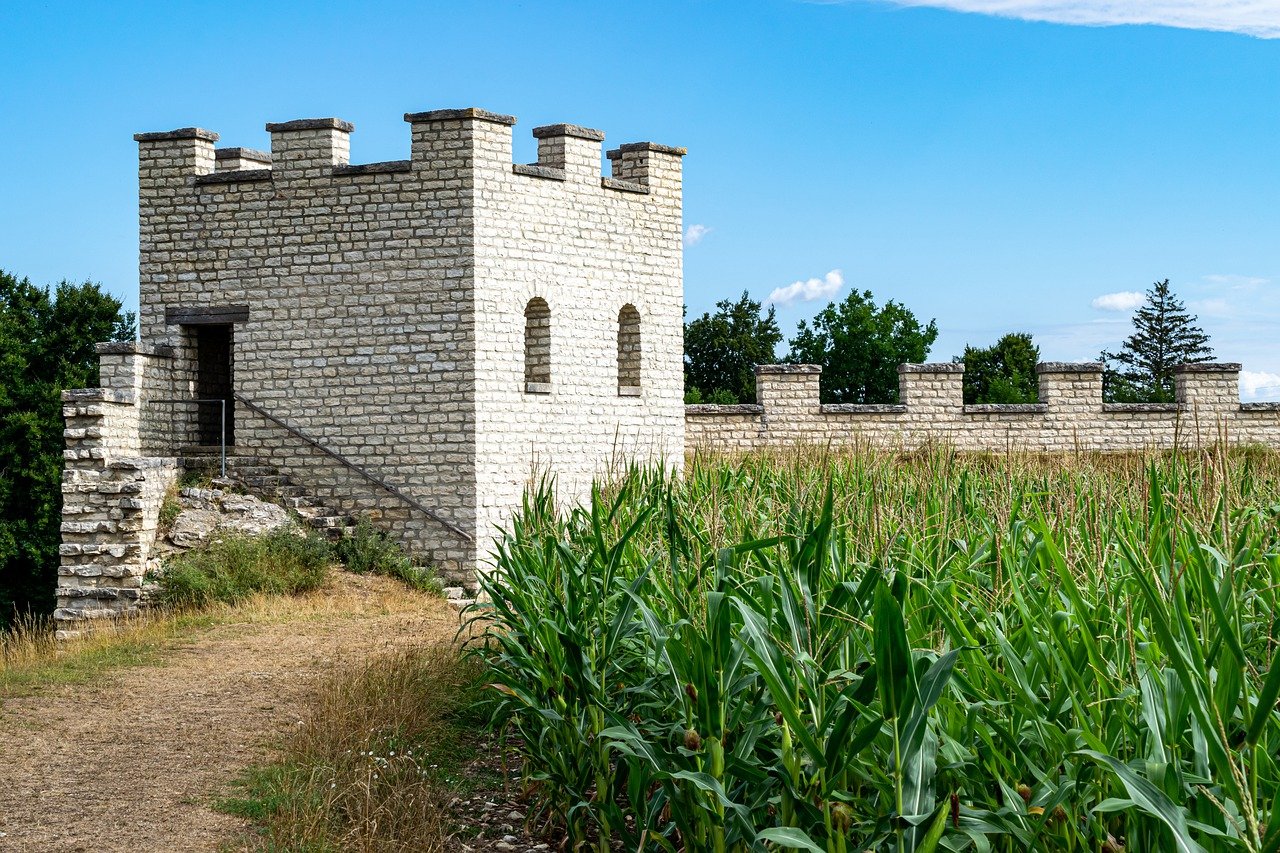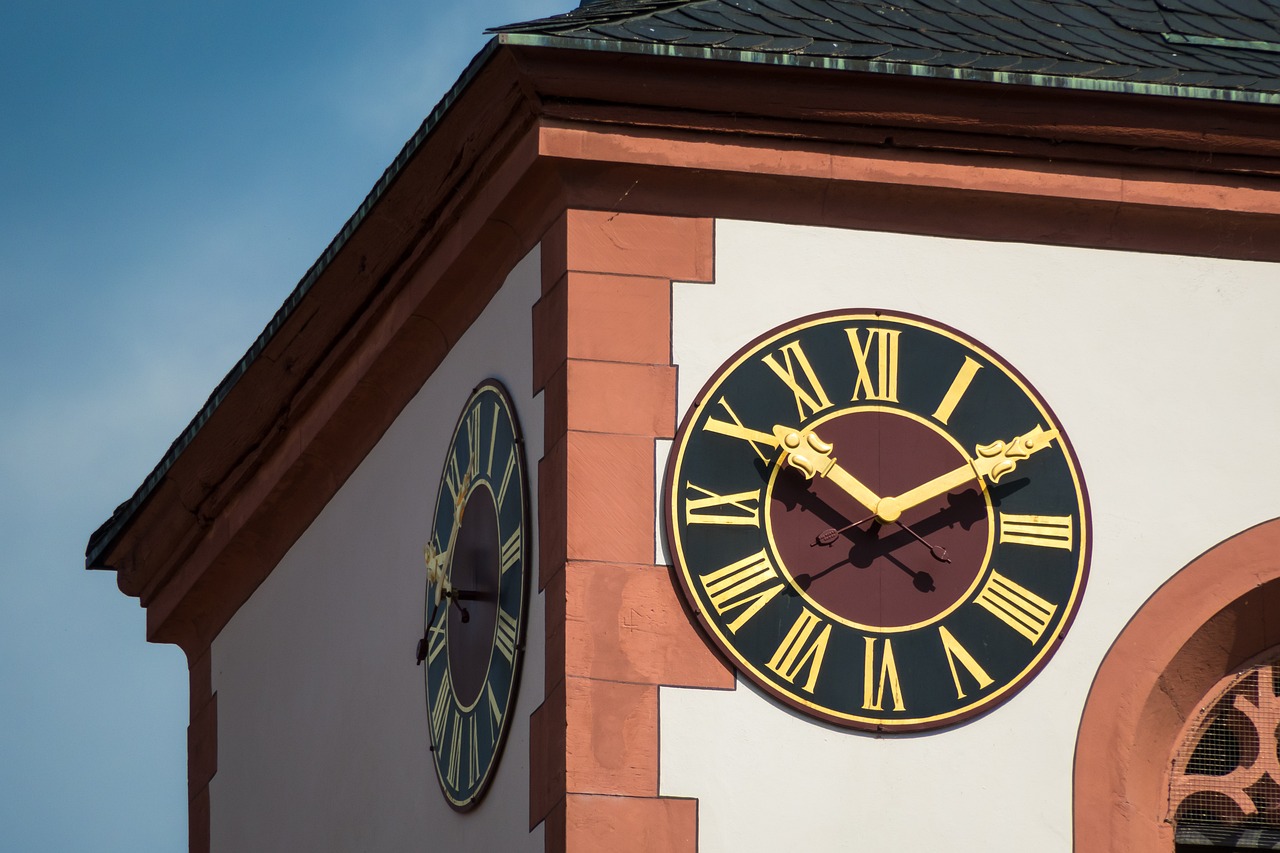The History of the Roman Empire - Major Events
The Roman Empire is a captivating tale of power, conquest, and eventual decline that has left an indelible mark on history. From its legendary founding in 753 BC to its dramatic collapse in 476 AD, the empire's trajectory was marked by a series of major events that shaped its rise and fall.
One of the most enduring legends of Rome is the story of Romulus and Remus, the twin brothers raised by a she-wolf who are said to have founded the city of Rome in 753 BC. This mythological tale lays the foundation for the grandeur and mystique surrounding the birth of the Roman Empire.
The Punic Wars, a series of three conflicts between Rome and Carthage, were pivotal in shaping the expansion of Roman territories and the eventual destruction of Carthage. These wars not only solidified Rome's dominance in the Mediterranean but also set the stage for its imperial ambitions.
The assassination of Julius Caesar in 44 BC sent shockwaves through the Roman Republic, leading to a period of political turmoil and civil unrest. Caesar's death marked a turning point in Roman history, paving the way for the rise of the Roman Empire under his adopted heir, Augustus.
Augustus, the first Roman emperor, ushered in a period of peace and stability known as the Pax Romana. During his reign, the empire experienced a golden age of prosperity and cultural flourishing, setting the stage for centuries of Roman dominance.
In 285 AD, the Roman Empire was split into the Western and Eastern Empires, each with its own set of challenges and developments. This division marked a significant shift in the political and cultural landscape of the empire, foreshadowing its eventual decline.
The Roman Empire faced relentless invasions by barbarian tribes, such as the Visigoths and Vandals, which contributed to the weakening of the Western Roman Empire. These incursions exposed the empire's vulnerabilities and hastened its descent into chaos and fragmentation.
The sack of Rome by the Visigoths in 410 AD and the deposition of the last Roman emperor in 476 AD marked the final blows to the once-mighty empire. The fall of Rome symbolized the end of an era and the beginning of a new chapter in European history.
Despite its collapse, the Roman Empire's legacy endures in the foundations of Western civilization. Its contributions to law, architecture, language, and governance continue to shape our world today, serving as a testament to the enduring impact of one of history's greatest empires.

Founding of Rome
Exploring significant events that shaped the rise and fall of the Roman Empire, from its legendary founding in 753 BC to the eventual collapse in 476 AD.
According to the mythological tale, Rome was founded in 753 BC by twin brothers Romulus and Remus. The story goes that they were abandoned as infants and raised by a she-wolf. As they grew older, a quarrel arose between them leading to Romulus killing Remus and becoming the first king of Rome. This event marked the beginning of one of the greatest empires in history, with Rome eventually evolving into a powerful civilization that influenced the world for centuries.
Detailing the series of three wars fought between Rome and Carthage, the Punic Wars were pivotal in shaping the expansion of Roman territories. The conflicts, particularly the Second Punic War led by the Carthaginian general Hannibal, showcased Rome's military prowess and determination. The eventual defeat of Carthage not only secured Rome's dominance in the Mediterranean but also marked the end of a formidable rival.
Julius Caesar, a prominent Roman general and statesman, was assassinated in 44 BC by a group of senators fearing his growing power. The assassination sparked a period of political unrest and civil war in Rome. It symbolized the struggle for power and marked a significant turning point in Roman history, leading to the rise of the Roman Empire.
Augustus, the first Roman emperor, brought stability and prosperity to Rome during his reign. His rule marked the beginning of the Pax Romana, a period of relative peace and cultural flourishing across the empire. Augustus' reforms and governance laid the foundation for the Roman Empire's golden age, fostering advancements in art, literature, and architecture.
In 285 AD, Emperor Diocletian divided the Roman Empire into the Western and Eastern Empires to better manage its vast territories. This division led to distinct political and cultural developments, with the Eastern Empire, centered in Constantinople, lasting for another thousand years after the fall of the Western Empire.
The decline of the Western Roman Empire was accelerated by invasions from various barbarian tribes, including the Visigoths, Vandals, and Ostrogoths. These invasions weakened Roman defenses and infrastructure, contributing to the empire's eventual collapse. The sacking of Rome by the Visigoths in 410 AD was a significant blow to the once-mighty empire.
The fall of Rome in 476 AD marked the end of the Western Roman Empire. The deposition of the last Roman emperor, Romulus Augustulus, by the Germanic chieftain Odoacer symbolized the final blow to Roman authority in the West. The event signified the end of an era and the beginning of the Middle Ages in Europe.
The Roman Empire's legacy is profound and enduring, shaping Western civilization in various ways. From its legal system based on principles of justice and equality to its architectural achievements such as aqueducts, amphitheaters, and roads, Rome's influence can still be seen today. The Latin language, the foundation of many modern languages, is another testament to Rome's lasting impact on the world.

Punic Wars
The were a series of three major conflicts between the powerful city-states of Rome and Carthage, spanning over a century from 264 to 146 BC. These wars were pivotal in shaping the course of Western civilization and had far-reaching consequences that reverberated throughout the ancient world.
The First Punic War (264-241 BC) erupted over control of Sicily, a strategic island in the Mediterranean Sea. Both Rome and Carthage sought dominance over this lucrative region, leading to naval battles and land skirmishes that ultimately resulted in Rome emerging victorious. This victory marked Rome's entry onto the world stage as a formidable maritime power.
Following the First Punic War, tensions simmered between Rome and Carthage, culminating in the outbreak of the Second Punic War (218-201 BC). This conflict is perhaps best known for the legendary Carthaginian general Hannibal Barca's audacious crossing of the Alps with his army and his subsequent victories on Roman soil. Despite Hannibal's tactical brilliance, Rome's resilience and determination ultimately led to Carthage's defeat.
The Third Punic War (149-146 BC) was the final showdown between Rome and Carthage, resulting in the complete destruction of the Carthaginian city-state. Fueled by long-standing animosity and Rome's desire for total annihilation of its rival, the conflict ended with the razing of Carthage to the ground and the enslavement of its population.
These wars had profound implications for both Rome and Carthage. For Rome, the acquisition of new territories, wealth, and resources solidified its position as the dominant power in the Mediterranean. Conversely, Carthage's defeat marked the end of its status as a major player in ancient geopolitics, paving the way for Rome's ascendancy.
The legacy of the Punic Wars endures to this day, serving as a testament to the brutal realities of ancient warfare and the enduring impact of power struggles on the course of history.

Julius Caesar's Assassination
Julius Caesar's assassination in 44 BC sent shockwaves through the Roman Republic, triggering a series of events that would alter the course of history. The betrayal by his close associates, including Brutus and Cassius, culminated in a fatal attack during a meeting at the Theatre of Pompey. The assassination was a result of growing political tensions and fears of Caesar's increasing power and ambitions, highlighting the volatile nature of Roman politics at the time.
Following Caesar's death, Rome plunged into a period of chaos and uncertainty as competing factions vied for control. Mark Antony and Octavian, Caesar's adopted heir, emerged as key figures in the power struggle that ensued. The assassination of Julius Caesar marked the end of the Roman Republic and paved the way for the rise of the Roman Empire under the leadership of Octavian, who would later become known as Augustus.
The aftermath of Caesar's assassination revealed the fragility of the Roman political system and the dangers of unchecked ambition. The event served as a stark reminder of the consequences of political intrigue and betrayal in a society where power struggles often led to violence and upheaval. The legacy of Julius Caesar's assassination reverberated throughout Roman history, shaping the transition from republic to empire and leaving a lasting impact on the future of Rome.

Augustus and the Pax Romana
Augustus, formerly known as Octavian, rose to power after the demise of Julius Caesar and became the first Roman emperor, marking the beginning of the Roman Empire's imperial era. His reign from 27 BC to 14 AD ushered in a period of relative peace and stability known as the Pax Romana, or "Roman Peace." During this time, the Roman Empire experienced significant cultural and economic growth, with Augustus implementing various reforms to strengthen the empire's administration and infrastructure.
Under Augustus' rule, the Roman Empire flourished, with advancements in architecture, literature, and trade. The construction of iconic structures like the Pantheon and the Forum of Augustus showcased the empire's architectural prowess and grandeur. Additionally, Augustus' patronage of arts and literature contributed to a cultural renaissance, with renowned poets like Virgil and Horace flourishing during this period.
One of Augustus' key achievements was the establishment of a stable government system that endured for centuries. He reformed the Roman army, implemented fiscal reforms, and centralized the administration of the empire, laying the foundation for future imperial success. The implementation of a standardized legal system, known as the Lex Romana, ensured uniformity and justice across the vast territories of the empire.
During the Pax Romana, trade flourished, facilitated by the extensive network of Roman roads and the security provided by the Roman legions. The empire experienced a period of economic prosperity, with increased agricultural production and thriving urban centers. The peace established by Augustus allowed for the growth of a prosperous middle class and the development of a sophisticated urban culture.
Despite the internal stability brought about by the Pax Romana, external threats still loomed. Augustus skillfully navigated diplomatic relations with neighboring kingdoms and tribes, maintaining a delicate balance of power that preserved the empire's borders. His strategic military campaigns consolidated Roman control over key regions, ensuring the security and expansion of the empire.
Augustus' legacy as the first Roman emperor and architect of the Pax Romana reverberates through history, shaping the course of Western civilization. His visionary leadership and enduring impact on Roman society laid the groundwork for the empire's longevity and influence, leaving an indelible mark on the world.

Split of the Roman Empire
The Split of the Roman Empire in 285 AD marked a pivotal moment in its history, leading to significant political and cultural changes. The division of the empire into the Western and Eastern Empires by Emperor Diocletian aimed to address the challenges of governing such a vast territory. The Western Roman Empire, with its capital in Rome, faced increasing pressure from external threats and internal instability, while the Eastern Roman Empire, centered in Constantinople, thrived for centuries.
Diocletian's reforms, including the establishment of the Tetrarchy system, aimed to streamline governance and ensure better administration of the empire. However, the split also resulted in distinct developments in each region, with the Western Empire facing economic hardships and constant invasions, while the Eastern Empire maintained relative prosperity and stability.
The division of the Roman Empire not only had political implications but also cultural and religious consequences. The Western Empire struggled to maintain control over its vast territories, leading to the gradual decline of Roman influence in the West. Meanwhile, the Eastern Empire, later known as the Byzantine Empire, continued to thrive and preserve Roman traditions, contributing to the preservation of classical knowledge and culture.
Despite efforts to reunify the empire under Emperor Constantine the Great, the split proved to be irreversible, ultimately leading to the fall of the Western Roman Empire in 476 AD. The Eastern Roman Empire, however, endured for nearly a millennium, shaping the course of history in the Byzantine world.

Barbarian Invasions
The Barbarian Invasions marked a tumultuous period in the history of the Roman Empire, characterized by the incursions of various barbarian tribes that significantly contributed to the decline of the Western Roman Empire. These invasions were not isolated events but rather a culmination of factors that weakened the empire over time. The Visigoths, led by Alaric, famously sacked Rome in 410 AD, symbolizing the vulnerability of the once-mighty empire to external threats.
One of the key factors that facilitated the success of the barbarian invasions was the internal strife and political instability within the Roman Empire. The constant power struggles, corruption, and ineffective leadership at the imperial level weakened the empire's ability to defend its borders and maintain internal cohesion. This power vacuum created an opportunity for the barbarian tribes to exploit the weaknesses of the empire and launch their incursions.
The migration of various barbarian tribes, such as the Vandals, Suebi, and Alans, across the Roman frontiers also played a significant role in destabilizing the empire. These tribes were often fleeing from other invading forces or seeking better lands for settlement, putting pressure on the already strained resources of the Roman Empire. As they pushed into Roman territories, they clashed with the Roman legions and further weakened the empire's defenses.
Moreover, the economic strain on the Roman Empire due to excessive military spending and a dwindling tax base exacerbated the impact of the barbarian invasions. The cost of maintaining a vast empire, coupled with the loss of revenue from the plundered provinces, strained the imperial coffers and hampered the ability to effectively respond to external threats. The pillaging and looting by the barbarian tribes further drained the already fragile economy of the empire.
The culmination of these factors eventually led to the fall of the Western Roman Empire in 476 AD when the last Roman emperor, Romulus Augustulus, was deposed by the Germanic chieftain Odoacer. The once-mighty empire, which had dominated the Mediterranean world for centuries, succumbed to the relentless pressure of the barbarian invasions and internal turmoil, marking the end of an era in ancient history.

Fall of Rome
Exploring significant events that shaped the rise and fall of the Roman Empire, from its legendary founding in 753 BC to the eventual collapse in 476 AD.
Delving into the mythological tale of Romulus and Remus, the twin brothers who are said to have founded the city of Rome in 753 BC.
Detailing the series of three wars fought between Rome and Carthage, which ultimately led to the expansion of Roman territories and the destruction of Carthage.
Examining the political turmoil that ensued after the assassination of Julius Caesar in 44 BC, marking a turning point in Roman history.
Discussing the reign of Augustus, the first Roman emperor, and the era of peace and stability known as the Pax Romana that followed his rule.
Exploring the division of the Roman Empire into the Western and Eastern Empires in 285 AD, leading to distinct political and cultural developments.
Analyzing the invasions by various barbarian tribes, such as the Visigoths and Vandals, that contributed to the decline of the Western Roman Empire.
Investigating the events surrounding the sack of Rome by the Visigoths in 410 AD and the eventual deposition of the last Roman emperor in 476 AD.
Reflecting on the enduring impact of the Roman Empire on Western civilization, including its contributions to law, architecture, and language.

Legacy of the Roman Empire
The stands as a monumental pillar in the annals of history, casting a long shadow that continues to influence modern society. The empire's imprint on Western civilization is profound and far-reaching, shaping various aspects of culture, governance, and architecture that endure to this day.
One of the most enduring legacies of the Roman Empire lies in its legal system. The Romans were pioneers in developing a comprehensive legal framework that emphasized justice, equality, and the rule of law. The principles of Roman law, such as the presumption of innocence and the right to a fair trial, have formed the basis of many modern legal systems around the world.
Furthermore, the Romans were master architects and engineers, leaving behind a legacy of monumental structures that still awe and inspire. From the grandeur of the Colosseum to the intricate engineering of aqueducts and roads, Roman architecture continues to be studied and emulated for its innovation and durability.
Language is another area where the Roman legacy shines brightly. Latin, the language of the Romans, has had a profound impact on the development of modern languages. Many Romance languages, such as French, Spanish, and Italian, trace their roots back to Latin, showcasing the enduring influence of the Roman Empire on linguistic evolution.
Moreover, the Roman Empire's cultural assimilation of diverse peoples and traditions laid the foundation for a rich tapestry of art, literature, and philosophy that continues to resonate through the ages. The fusion of Roman, Greek, and other cultural elements created a vibrant and dynamic cultural landscape that has left an indelible mark on the collective heritage of humanity.
In conclusion, the is a testament to the enduring power of human achievement and innovation. By delving into the rich tapestry of Roman history, we gain valuable insights into the foundations of our modern world and the enduring impact of a civilization that once strode the world stage with unparalleled grandeur.
Frequently Asked Questions
- What was the significance of the Punic Wars?
The Punic Wars were crucial in shaping the expansion of Roman territories and ultimately led to the destruction of Carthage, solidifying Rome's dominance in the Mediterranean region.
- Who was Augustus and what was the Pax Romana?
Augustus was the first Roman emperor who ushered in a period of peace and stability known as the Pax Romana, characterized by relative tranquility and cultural flourishing within the empire.
- How did the Barbarian Invasions contribute to the fall of the Roman Empire?
The Barbarian Invasions, carried out by various tribes such as the Visigoths and Vandals, weakened the empire's defenses and infrastructure, hastening the decline of the Western Roman Empire.
- What is the lasting legacy of the Roman Empire?
The Roman Empire's legacy includes significant contributions to Western civilization, particularly in the realms of law, architecture, language, and governance, which continue to influence modern society.



















